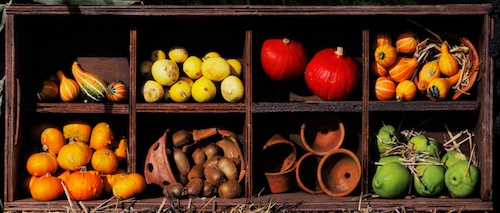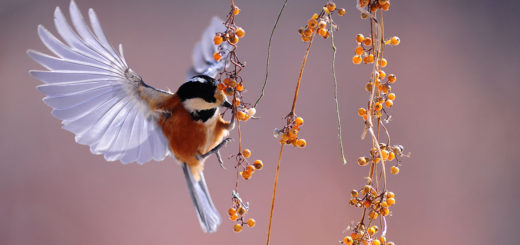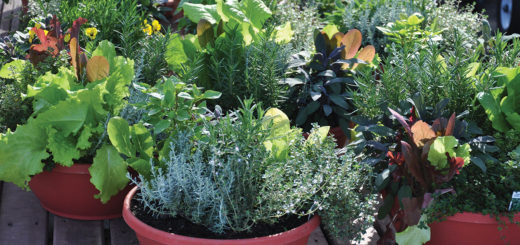Fall Bulbs
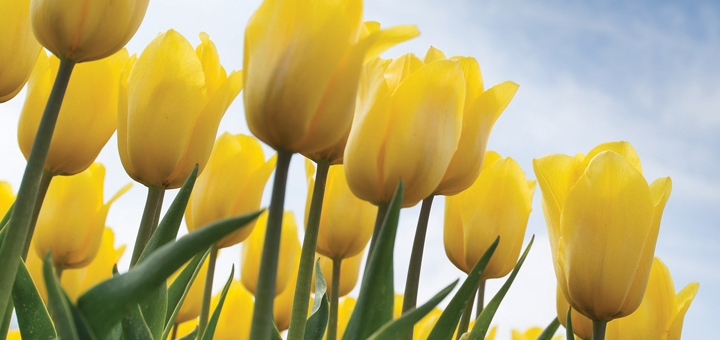 Drought or no drought, your garden can have bling in spring. But to enjoy this miraculous March show, you need to get to work now. Planted in November, spring-flowering bulbs can turn a boring landscape into an awesome display of color. Do not just dig a hole and throw the bulb in. For the best growth, you should prepare a bed ahead of planting. This means that you’ll need to remove weeds and loosen the soil. It is also a good idea to add compost for nutrients or sand for drainage before you plant. Make sure that you choose a spot with at least six hours of sunlight. Bulbs like soil that is rich with organic matter or compost, and they love well-drained soil. Soggy soil or overwatering will cause them to rot. Finally, when you are ready to plant, the general rule of thumb is to plant a bulb three times as deep as the bulb is tall, making sure the pointy part is
Drought or no drought, your garden can have bling in spring. But to enjoy this miraculous March show, you need to get to work now. Planted in November, spring-flowering bulbs can turn a boring landscape into an awesome display of color. Do not just dig a hole and throw the bulb in. For the best growth, you should prepare a bed ahead of planting. This means that you’ll need to remove weeds and loosen the soil. It is also a good idea to add compost for nutrients or sand for drainage before you plant. Make sure that you choose a spot with at least six hours of sunlight. Bulbs like soil that is rich with organic matter or compost, and they love well-drained soil. Soggy soil or overwatering will cause them to rot. Finally, when you are ready to plant, the general rule of thumb is to plant a bulb three times as deep as the bulb is tall, making sure the pointy part is
facing upwards.
Nowadays, many stores are selling their fall bulbs in July or August because they want gardening supplies out of the way in time to set up holiday displays. This means that you’ll either need to store your bulbs carefully for a month or three, or you’ll need to order online or by mail at planting time so that you have fresh, healthy bulbs. If you are stuck buying your bulbs early, then make sure they are firm and plump, with no mold or rot. Leave them in the bag that you purchased them in, and then place that bag in a paper lunch bag so that you can store the bulbs in the fridge without making a mess.
Not all bulbs should be planted in the fall. Dahlias and gladiolus should be planted in the spring, for instance, while daffodils and tulips do well when planted in late summer or early autumn. If you are planting a bulb that blooms in the spring, plant it in the fall. For bulbs that bloom early summer or later, plant them in the spring.
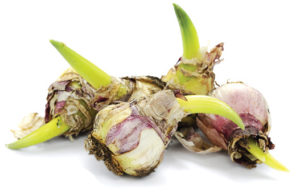 Once you have the bulbs in the ground, they’ll stay dormant for the remainder of the fall and winter, so you won’t need to bother with fertilizing. Wait until you start to see the first shoots of spring, because that is an indicator that the roots are growing and ready for nutrients. You’ll also want to make sure that you don’t fertilize after the bulbs start to flower because this will inhibit bulb growth. If you haven’t tried bulbs in your garden, you definitely should. With daffodils, hyacinths, tulips and other early spring bloomers, bulb beds will give you beautiful color long before the rest of your garden starts to grow.
Once you have the bulbs in the ground, they’ll stay dormant for the remainder of the fall and winter, so you won’t need to bother with fertilizing. Wait until you start to see the first shoots of spring, because that is an indicator that the roots are growing and ready for nutrients. You’ll also want to make sure that you don’t fertilize after the bulbs start to flower because this will inhibit bulb growth. If you haven’t tried bulbs in your garden, you definitely should. With daffodils, hyacinths, tulips and other early spring bloomers, bulb beds will give you beautiful color long before the rest of your garden starts to grow.
Some of the more popular bulbs are Daffodils, Tulips, Hyacinth, Dahlia, Lily, Amaryllis, Iris, Gladiola, and Ranunculus. For shady areas check out Hosta, Lily of the Valley, and Begonias.
The time you take in the fall to prepare the soil and plant your bulbs will reward you with a beautiful array of flowers in
the spring!

